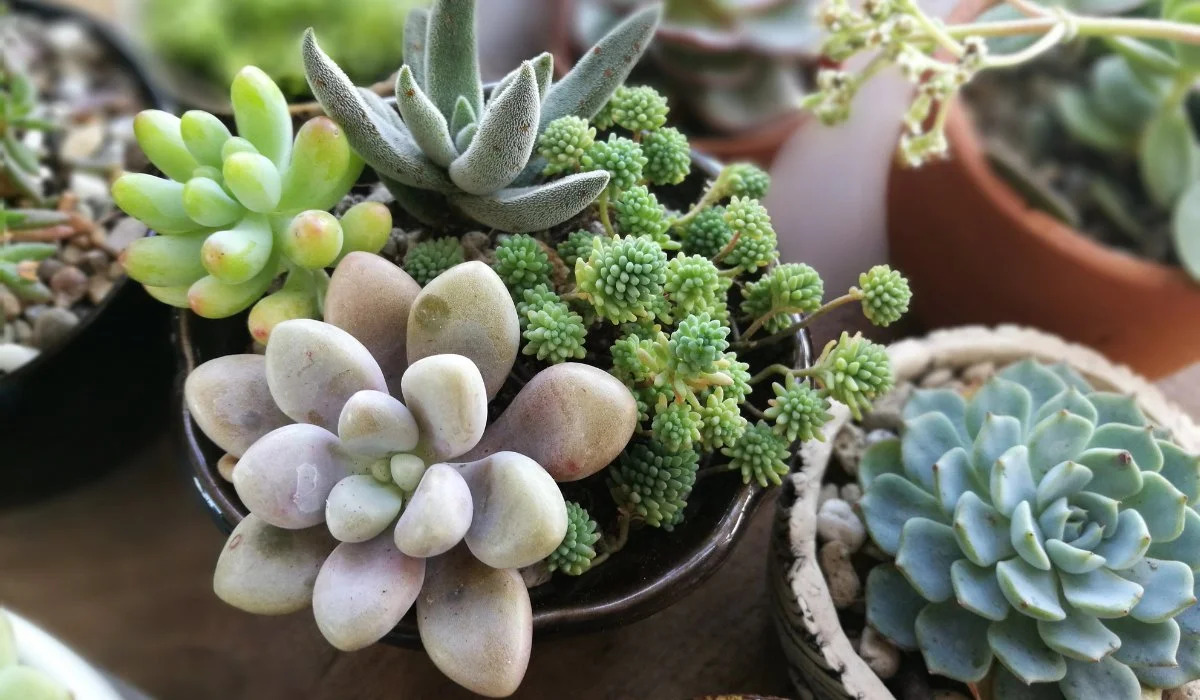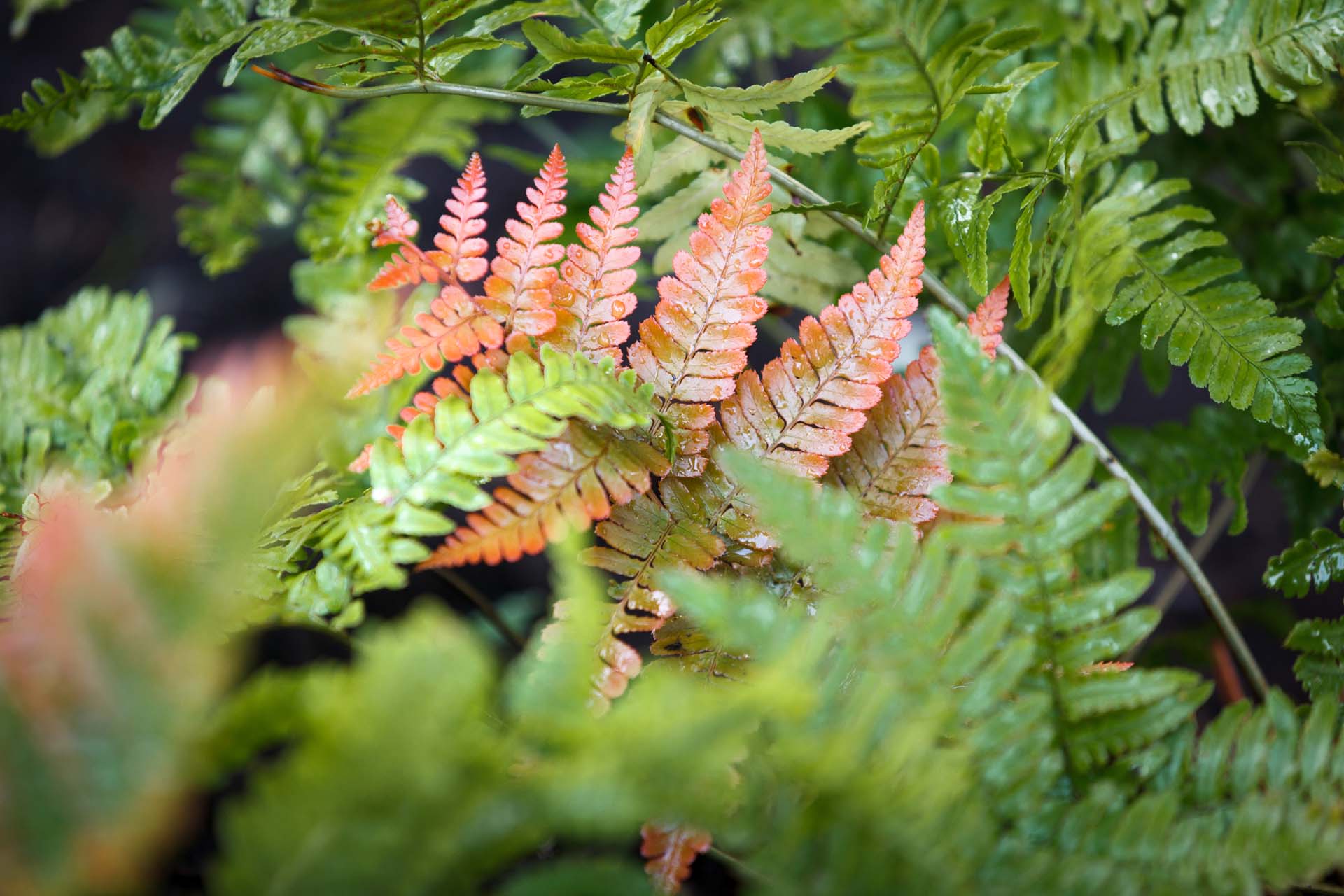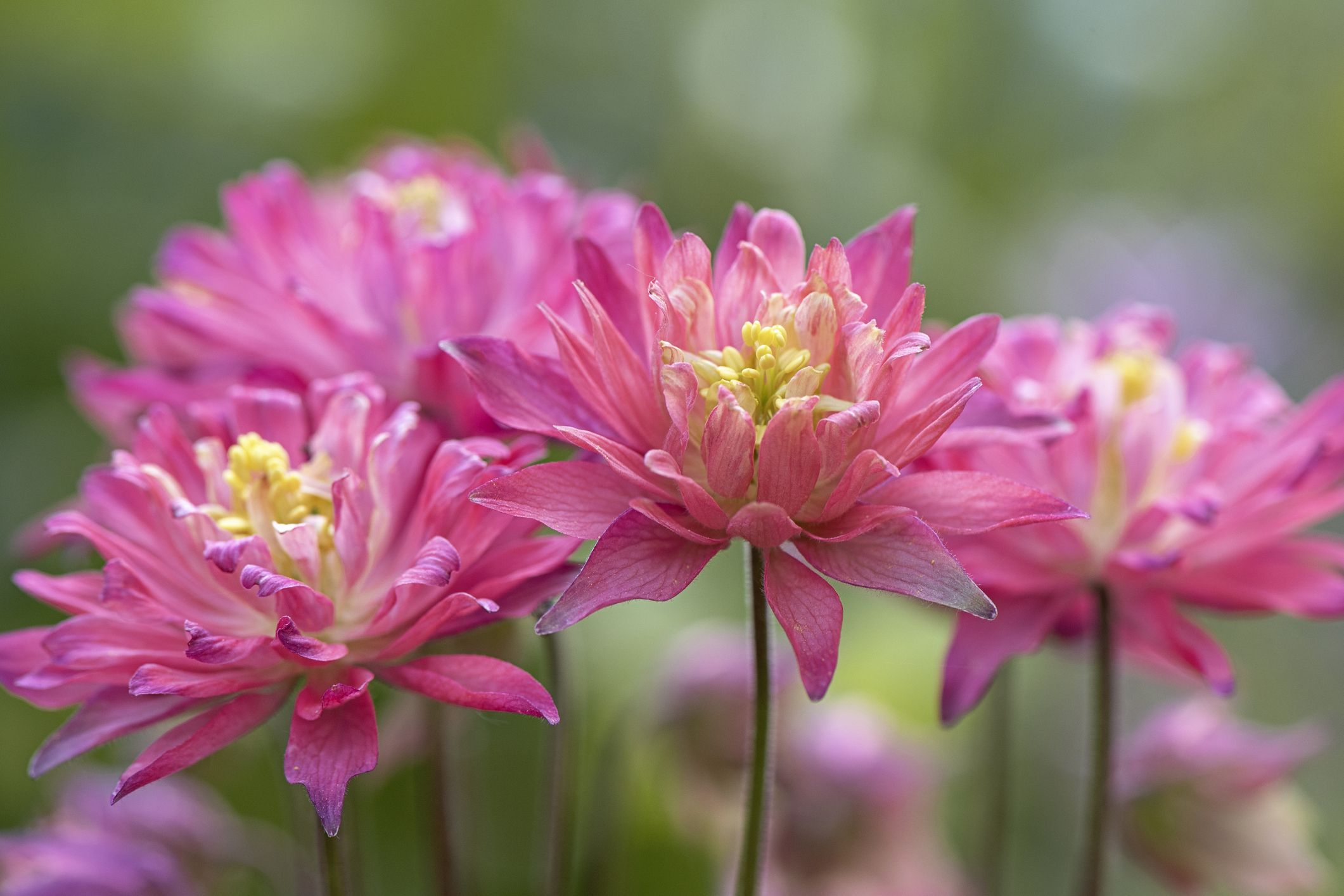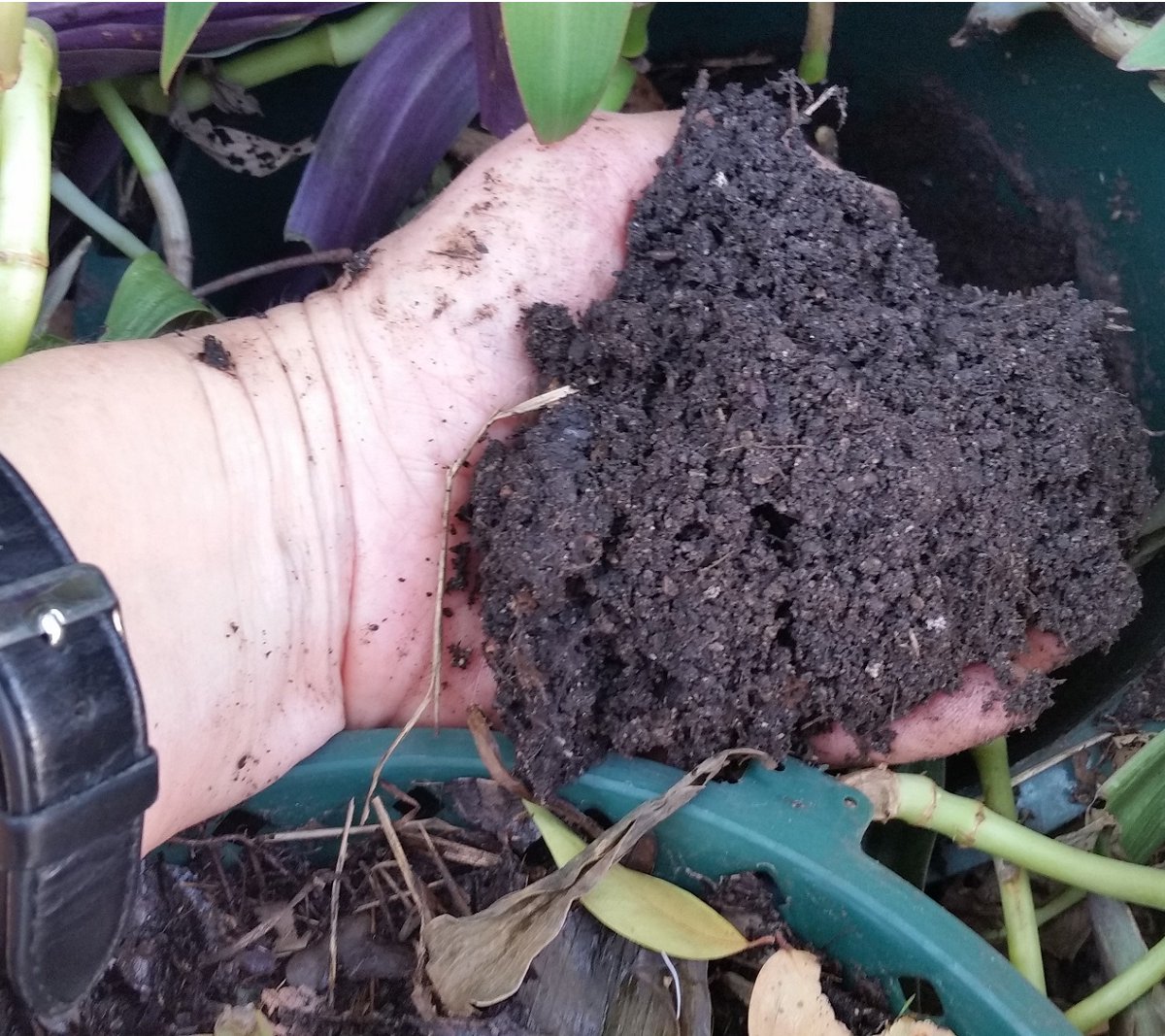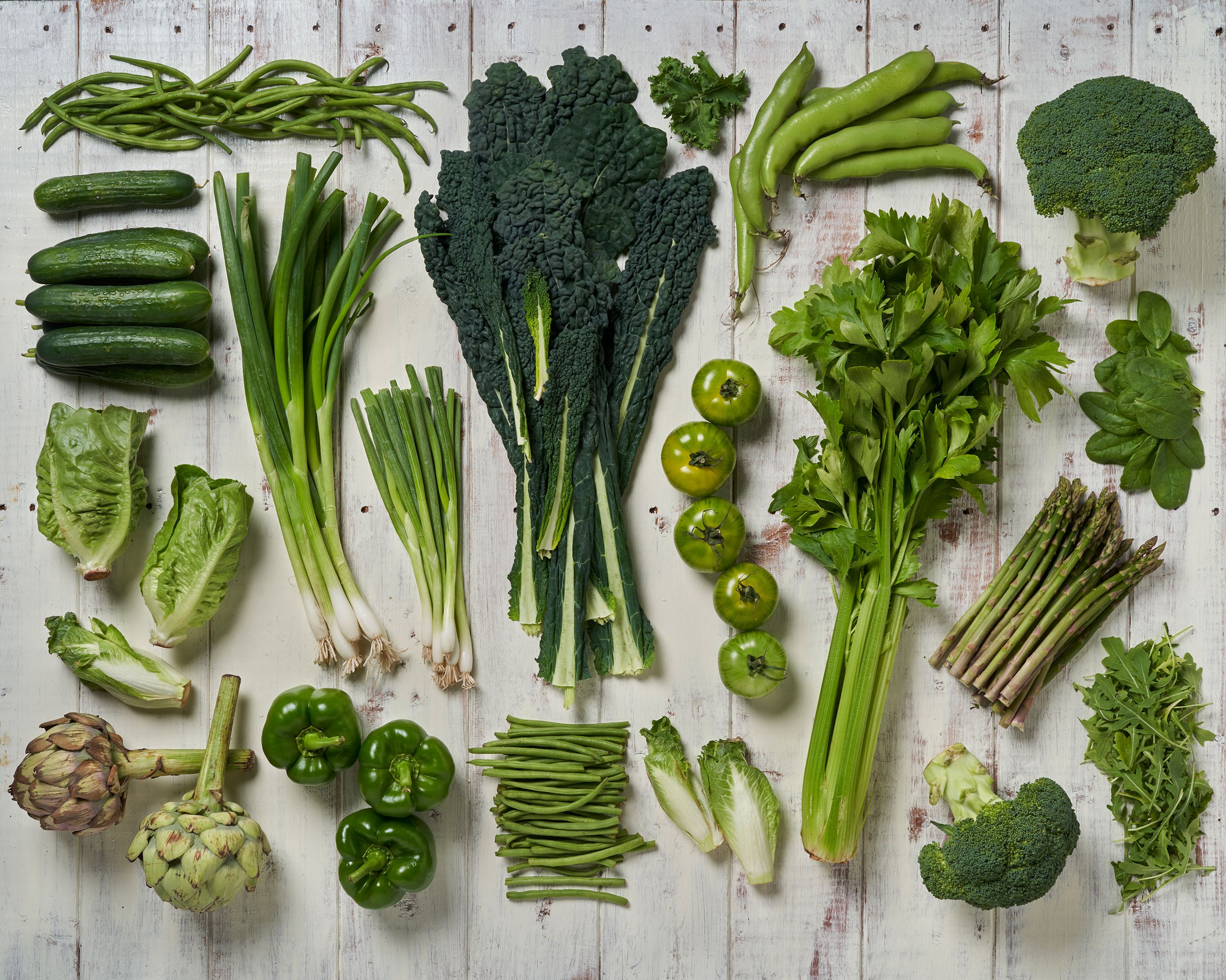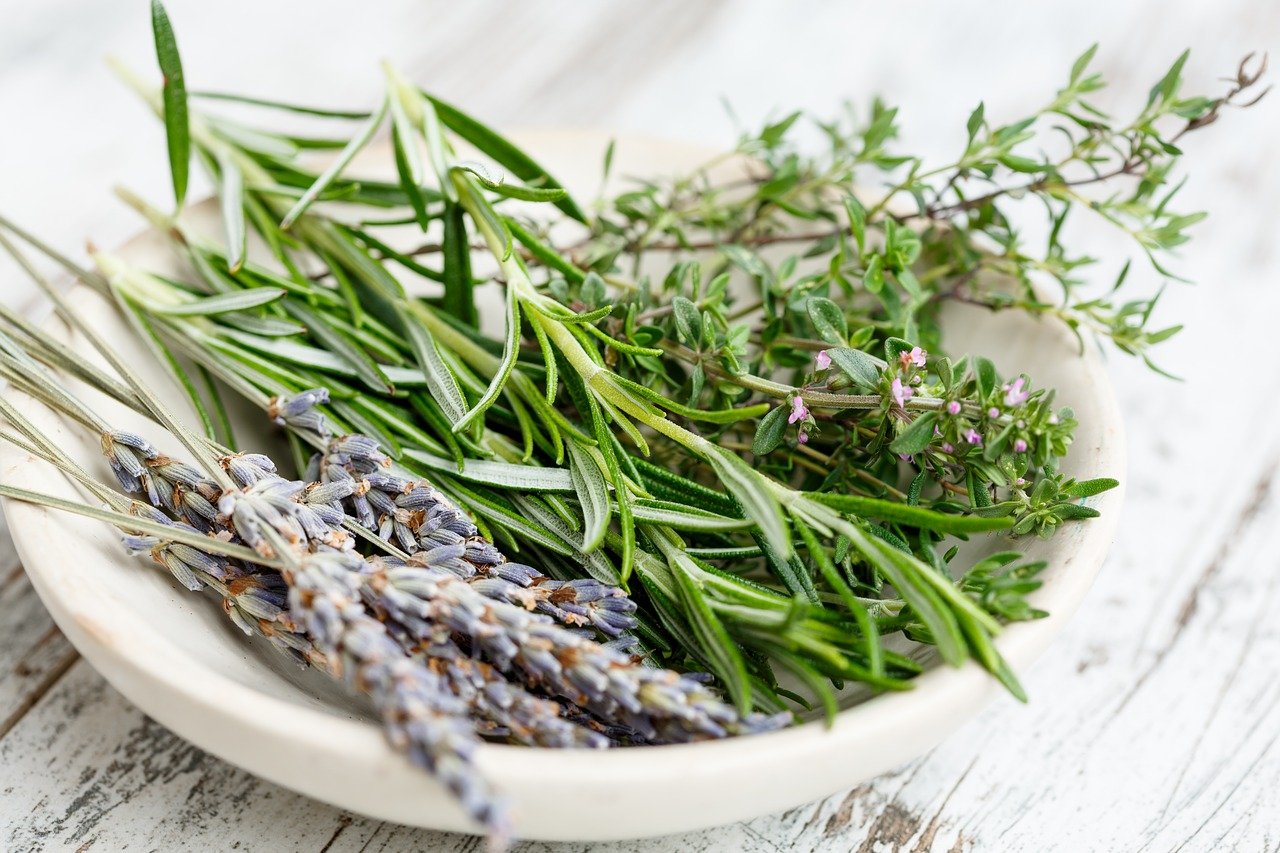Home>Types of Gardening>Ornamental Gardening>What Are Good Perennials For Full Sun


Ornamental Gardening
What Are Good Perennials For Full Sun
Modified: February 10, 2024
Discover the best perennials for full sun in your ornamental gardening. Find out which flowers thrive in sunny conditions and add beauty to your garden.
(Many of the links in this article redirect to a specific reviewed product. Your purchase of these products through affiliate links helps to generate commission for Chicagolandgardening.com, at no extra cost. Learn more)
Table of Contents
- Introduction
- Definition of Perennials
- The Benefits of Growing Perennials in Full Sun
- Factors to Consider Before Planting Perennials in Full Sun
- Recommended Perennials for Full Sun
- Daylilies
- Coneflowers
- Black-eyed Susans
- Lavender
- Sedum
- Russian Sage
- Salvia
- Coreopsis
- Yarrow
- Shasta Daisy
- Tips for Growing Perennials in Full Sun
- Conclusion
Introduction
Welcome to the world of ornamental gardening! If you have a sunny spot in your garden and are looking for beautiful plants that can thrive in full sun, then perennials are the perfect choice for you. With their long-lasting beauty and ability to come back year after year, perennials are the backbone of any successful garden.
But what exactly are perennials? Perennials are plants that live for more than two years, and unlike annuals that need to be replanted every year, perennials continue to grow and bloom year after year. They are a great investment in your garden, as they add charm and color to your landscape for many seasons.
One of the key benefits of growing perennials in full sun is the resilience they have to withstand the intense heat and direct sunlight. These plants have adapted to thrive in sunny conditions, allowing you to create stunning flower beds, borders, or even a sunny meadow that bursts with color throughout the year.
Before you dive headfirst into planting perennials in full sun, there are a few factors to consider. It’s important to evaluate the soil quality, drainage, and available space in your garden to ensure the success of your plants. Additionally, understanding the specific needs and growth habits of the perennials you choose will help you create a harmonious and well-balanced garden.
In this article, we will explore some recommended perennials that thrive in full sun and provide helpful tips for growing them successfully. So, grab your gardening gloves, shovel, and let’s get started on creating a vibrant and flourishing garden with these amazing perennials that bask in the sun’s rays!
Definition of Perennials
Before we delve deeper into the world of perennials for full sun, let’s take a moment to understand what exactly perennials are. Perennials are plants that live for more than two years, and as the name suggests, they persist and continue to grow for multiple growing seasons.
Unlike annuals that complete their life cycle in one season and biennials that take two seasons to complete their life cycle, perennials have the remarkable ability to come back year after year. Their longevity is what makes them a popular choice among gardeners looking for plants that provide lasting beauty and value to their gardens.
Perennials come in various shapes, sizes, and forms, ranging from low-growing ground covers to tall, dramatic flowers that add height and drama to your garden. They can be herbaceous or woody, with herbaceous perennials dying back to the ground during winter and regrowing in spring, while woody perennials maintain their structure throughout the year.
These plants have developed strategies to survive the changing seasons and can endure harsh winters, hot summers, and everything in between. Their robust roots, well-adapted foliage, and efficient energy storage systems allow them to withstand adverse weather conditions, making them a reliable choice for any garden.
Perennials are known for their ability to spread and multiply over time, creating larger and more impressive displays with each passing year. They can be propagated through division, allowing you to expand your garden or share plants with fellow gardening enthusiasts.
One of the many advantages of growing perennials is the variety they offer. From vibrant flowers in a rainbow of colors to luscious foliage that adds texture and interest, there is a perennial for every garden style and personal preference.
Now that we have a better understanding of what perennials are, let’s explore why growing them in full sun can yield impressive results and transform your garden into a dazzling oasis.
The Benefits of Growing Perennials in Full Sun
Growing perennials in full sun comes with a multitude of benefits that make them an excellent choice for your garden. Here are some of the advantages of growing these plants in sunny locations:
- Abundance of Blooms: Sun-loving perennials thrive in full sun as they receive ample sunlight throughout the day. This abundance of sunlight translates to more energy for the plants, resulting in an abundance of blooms. Imagine your garden adorned with vibrant flowers in a variety of hues, creating a stunning visual display.
- Enhanced Flower Color: Full sun exposure intensifies the colors of flowers, making them appear more saturated and vibrant. The bright sunlight brings out the best in the petals, making them more visually appealing and captivating. Your garden will be a riot of colors, creating a cheerful and inviting atmosphere.
- Stronger Plant Structure: Sunlight is crucial for the formation and strengthening of the plant’s structure. Perennials grown in full sun develop sturdy stems and foliage, ensuring that they can stand tall and withstand strong winds without toppling over. This structural integrity adds longevity to your garden plants.
- Better Flowering Performance: Full sun exposure stimulates the production of flowers and encourages more prolific blooming. Sun-loving perennials are known for their impressive flower displays, and by providing them with the optimal sunlight they require, you can enjoy a continuous show of blooms throughout the growing season.
- Greater Attraction to Pollinators: Bees, butterflies, and other pollinators are attracted to the vibrant colors and nectar-rich flowers found in full sun gardens. By growing perennials in full sun, you create a welcoming habitat for these essential creatures, contributing to the overall health of your garden ecosystem.
- Improved Disease Resistance: Full sun exposure helps to reduce the occurrence of fungal diseases that thrive in damp and shady conditions. The sunlight dries out the foliage, preventing the development and spread of diseases, resulting in healthier and more resilient plants in your garden.
Growing perennials in full sun not only enhances their performance but also adds a dynamic and vibrant element to your garden landscape. Now that we understand the benefits of growing perennials in full sun let’s explore some essential factors to consider before you start planting.
Factors to Consider Before Planting Perennials in Full Sun
While perennials generally excel in full sun, there are a few factors to consider before adding them to your garden. By taking these factors into account, you can ensure the success and longevity of your plants. Here are some important considerations:
- Soil Quality: Before planting perennials, it’s essential to assess the quality of your soil. Most perennials prefer well-draining soil that is rich in organic matter. If your soil is heavy and clay-like, consider amending it with compost or organic matter to improve drainage and fertility.
- Watering Needs: Full sun locations tend to be hotter and drier, meaning perennials in these areas may need more regular watering to stay hydrated. Before planting, research the watering requirements of the specific perennials you have in mind to ensure you can provide adequate moisture.
- Spacing: It’s crucial to consider the mature size of the perennials and provide enough spacing between plants. Crowded plants not only compete for resources like sunlight and water but can also create a breeding ground for pests and diseases. Refer to the spacing recommendations provided for each perennial variety.
- Height and Shade Considerations: While full sun is ideal for most perennials, consider the height and structure of the plants as they may cast shade on other sun-loving plants. Be mindful of the positioning and overall design of your garden to ensure each plant receives sufficient sunlight.
- Heat and Sun Intensity: Different regions may experience varying levels of heat and sun intensity. If you live in a particularly hot climate, select perennials that are more heat-tolerant and can withstand intense sunlight. Protecting young plants with shade cloth during extreme heat can also help them establish themselves.
- Hardiness Zone: Check the hardiness zone of the perennials you are considering to ensure they are suitable for your specific climate. Selecting perennials that are well-adapted to your region will increase their chances of survival and long-term success.
- Maintenance Requirements: Consider the maintenance needs of the perennials, such as deadheading, pruning, and dividing. Some plants may require more frequent attention and care. Assess your availability and commitment to gardening tasks before selecting perennials.
By considering these factors, you can create a well-planned and thriving garden that showcases the beauty of perennials in full sun. Now that we have explored the key considerations, let’s dive into some recommended perennials that are known to thrive in sunny conditions.
Recommended Perennials for Full Sun
When it comes to choosing perennials for full sun, there is a wide range of beautiful and resilient options to consider. Here are ten recommended perennials that thrive in sunny conditions and can bring vibrant colors and textures to your garden:
- Daylilies: Daylilies are a popular choice for full sun gardens due to their stunning and long-lasting blooms. They come in a variety of colors and bloom profusely throughout the summer, adding beauty to any landscape.
- Coneflowers: Coneflowers, also known as Echinacea, are hardy and drought-tolerant perennials that produce bold, daisy-like blooms. They attract pollinators and provide a pop of color to your garden.
- Black-eyed Susans: With their golden yellow petals and dark centers, Black-eyed Susans add a splash of sunshine to any garden. They are easy to grow, low-maintenance, and attract butterflies and bees.
- Lavender: Known for its fragrant flowers and aromatic foliage, lavender thrives in full sun. Its calming scent and beautiful purple flowers make it a popular choice for herb gardens and borders.
- Sedum: Sedums, also known as stonecrops, are succulent perennials that can tolerate dry and sunny conditions. Their fleshy leaves and star-shaped flowers add a unique texture and interest to your garden.
- Russian Sage: Russian sage is a tall, wispy perennial with silvery foliage and lavender-blue flowers. It is drought-tolerant, deer-resistant, and provides a lovely airy texture in the garden.
- Salvia: Salvia, also called sage, is a versatile perennial that comes in various sizes and colors. They produce vibrant flowers that attract hummingbirds and butterflies, making them a delightful addition to any garden.
- Coreopsis: Coreopsis, or tickseed, is a low-maintenance perennial with daisy-like flowers in shades of yellow, orange, and pink. They bloom profusely and are a great choice for adding color to borders and rock gardens.
- Yarrow: Yarrow is a hardy perennial with fern-like foliage and flat-topped flowers in shades of white, yellow, and pink. They are drought-tolerant, attract butterflies, and make lovely cut flowers.
- Shasta Daisy: Shasta daisies are classic perennials with white petals and yellow centers. They are reliable bloomers and add a timeless beauty to any garden or floral arrangement.
These are just a few examples of the many perennials that thrive in full sun. When selecting perennials for your garden, consider their unique characteristics, bloom times, and growth habits to create a well-balanced and visually captivating landscape.
Now that you have an idea of which perennials to choose, let’s explore some tips for growing perennials successfully in full sun.
Daylilies
Daylilies are one of the most popular perennials for full sun gardens, and for good reason. With their vibrant blooms and low maintenance requirements, they are a favorite among gardeners of all skill levels. Here’s what you need to know about growing daylilies:
Daylilies, or Hemerocallis, are known for their large, trumpet-shaped flowers that come in a wide range of colors, including yellow, orange, pink, and red. These hardy perennials can withstand full sun and produce an abundance of blooms, adding beauty to your garden from late spring to late summer.
When planting daylilies, choose a location with well-draining soil that receives at least six hours of direct sunlight daily. They are adaptable to different soil types but prefer a slightly acidic to neutral pH. Ensure that the soil is amended with organic matter to improve its fertility and drainage.
Daylilies are relatively low maintenance plants. Water them regularly during the first growing season to help them establish their root systems. Afterward, they are tolerant of drought and only require watering during dry spells.
Deadheading spent blooms and removing any yellowed or damaged foliage will help keep your daylilies looking tidy and encourage continuous blooming. Divide them every three to four years in early spring or late summer to maintain their vigor and prevent overcrowding.
While daylilies are generally pest and disease resistant, keep an eye out for common garden pests like aphids and spider mites. Regular inspection of the leaves and stems will allow you to detect and address any pest issues promptly.
Daylilies can be used in various ways in your garden. Plant them in borders, along walkways, or in large drifts to create a stunning display of color. They also make beautiful cut flowers, adding a touch of elegance to floral arrangements.
With their versatility, reliability, and striking blooms, daylilies are a fantastic addition to any full sun garden. They bring vibrant color and easy-care beauty to your landscape, making them a top choice for both beginner and seasoned gardeners.
Now that you know how to grow daylilies successfully, let’s move on to the next recommended perennial for full sun gardens.
Coneflowers
Coneflowers, also known as Echinacea, are beloved perennials that thrive in full sun gardens. With their striking blooms and easy-care nature, they are a fantastic addition to any landscape. Here’s what you need to know about growing coneflowers:
Coneflowers are characterized by their daisy-like flowers with prominent, cone-shaped centers, which give them their name. They are native to North America and come in a range of colors, including shades of purple, pink, white, and yellow. These hardy perennials are not only beautiful but also attract pollinators like bees and butterflies to your garden.
When planting coneflowers, choose a sunny location with well-draining soil. These perennials can tolerate a wide range of soil types, including sandy, loamy, or clay soil. Ensure that the soil is amended with organic matter to improve its fertility and drainage.
Coneflowers can withstand dry conditions once established, making them ideal for low-water landscapes. Water them regularly during the first growing season to help them establish their root systems. Afterwards, they are drought-tolerant and only require supplemental watering during prolonged dry spells.
Deadheading spent blooms not only improves the appearance of coneflowers but also prolongs their blooming period. Leaving some faded flower heads can also provide food for birds in the fall and winter months.
Coneflowers are relatively pest and disease resistant. However, keep an eye out for common issues like powdery mildew or leaf spots. Providing adequate spacing between plants, ensuring good air circulation, and avoiding overhead watering can help prevent these diseases.
These versatile perennials can be used in a variety of ways in your garden. Plant them in borders, cottage gardens, or wildflower meadows for a burst of vibrant color. They also make wonderful cut flowers, adding a touch of charm to your floral arrangements.
With their stunning blooms, tolerance to various soil conditions, and ability to attract pollinators, coneflowers are a fantastic choice for full sun gardens. Incorporating these beautiful perennials into your landscape will not only enhance its visual appeal but also support important pollinators.
Now that you know how to grow coneflowers successfully, let’s move on to the next recommended perennial for full sun gardens.
Black-eyed Susans
Black-eyed Susans, also known as Rudbeckia, are cheerful and vibrant perennials that thrive in full sun gardens. With their bright yellow petals and dark centers, they add a touch of sunshine to any landscape. Here’s what you need to know about growing Black-eyed Susans:
Black-eyed Susans are native to North America and are known for their daisy-like flowers that bloom from midsummer to fall. They are relatively low maintenance and can tolerate a variety of growing conditions, making them a favorite among gardeners of all levels of experience.
When planting Black-eyed Susans, choose a location that receives full sun for at least six hours a day. These perennials prefer well-draining soil but are adaptable to a range of soil types, including clay, loam, or sandy soil. Amending the soil with organic matter can help improve fertility and drainage.
Regular watering is important for the initial establishment of Black-eyed Susans, especially during dry periods. Once established, they are relatively drought-tolerant and can tolerate short periods of dryness. However, providing consistent moisture during prolonged drought can help them thrive.
Deadheading faded flowers can encourage continuous blooming and prevent self-seeding. However, if you want them to spread and naturalize, you can leave the spent flowers to develop seed heads, which attract birds to your garden during the fall and winter months.
Black-eyed Susans are generally resistant to most pests and diseases. However, keep an eye out for common garden pests, such as aphids or leafhoppers. Regular monitoring and appropriate organic pest control measures can help prevent and address any issues.
These vibrant perennials are versatile and can be used in various ways in your garden. Plant them in borders, cottage gardens, or wildflower meadows to create a stunning display of color. They also make wonderful cut flowers, adding a touch of charm and cheer to your floral arrangements.
With their vibrant yellow flowers and easy-growing nature, Black-eyed Susans are a fantastic choice for full sun gardens. Incorporating these perennials into your landscape will brighten up your garden and attract beneficial pollinators.
Now that you know how to grow Black-eyed Susans successfully, let’s move on to the next recommended perennial for full sun gardens.
Lavender
Lavender is a timeless and aromatic perennial that thrives in full sun gardens. With its beautiful flowers and soothing fragrance, it adds a touch of charm and elegance to any landscape. Here’s what you need to know about growing lavender:
Lavender plants are known for their slender, gray-green foliage and spikes of fragrant flowers in shades of purple, pink, blue, and white. They are native to the Mediterranean region and are well-adapted to sunny and dry conditions.
When planting lavender, choose a location with well-draining soil that receives at least six to eight hours of direct sunlight daily. Lavender prefers slightly alkaline to neutral soil. If your soil is heavy or clay-like, amend it with sand or gravel to improve drainage.
Lavender is relatively drought-tolerant once established and does not require frequent watering. It is important to water the plants deeply but infrequently, allowing the soil to dry out between waterings. Overwatering can lead to root rot and other diseases.
Pruning is a crucial step in maintaining the health and shape of lavender plants. In early spring or after flowering, prune back about one-third of the plant’s growth to promote bushier growth and prevent legginess. Regular pruning also helps maintain a compact shape and encourages more vigorous blooming.
Lavender is generally resistant to pests and diseases. However, keep an eye out for common issues like root rot or fungal diseases caused by excessive moisture or poor drainage. Ensuring proper soil conditions and avoiding overwatering can help prevent these problems.
Lavender is incredibly versatile and can be used in various ways in your garden. Plant them as a border, in rock gardens, or in containers to create a stunning display of color and fragrance. They also make lovely dried flowers or can be used for culinary purposes.
With its beautiful blooms, aromatic foliage, and adaptability to full sun conditions, lavender is a must-have perennial for any sunny garden. Incorporating these plants into your landscape will bring both visual and sensory delights to your outdoor space.
Now that you know how to grow lavender successfully, let’s move on to the next recommended perennial for full sun gardens.
Sedum
Sedum is a versatile and resilient perennial that thrives in full sun gardens. With its fleshy leaves and stunning flowers, it adds unique texture and interest to any landscape. Here’s what you need to know about growing sedum:
Sedums, also known as stonecrops, are low-growing perennials that come in a variety of forms and colors. They are known for their succulent foliage and clusters of vibrant flowers that attract butterflies and bees. Sedums are highly adaptable and can withstand the hot and dry conditions of full sun gardens.
When planting sedum, choose a location with well-draining soil that receives at least six hours of direct sunlight per day. Sedums are incredibly versatile and can tolerate various soil types, including sandy, rocky, or poor soil. However, they do best in soil that is not overly rich or wet.
Sedums are drought-tolerant plants and have a remarkable ability to store water in their fleshy leaves. Water newly planted sedums regularly to help them establish their root systems. Once established, they are highly tolerant of dry conditions and require minimal watering.
Pruning is generally not necessary for sedums, as they have a naturally compact and low-maintenance habit. However, trimming back tall sedums in late spring can help promote a more compact and bushy growth habit. Removing spent flower heads can also encourage continuous blooming and prevent self-seeding.
Sedums are relatively resistant to pests and diseases. However, keep an eye out for issues like root rot or fungal diseases caused by overwatering or poor drainage. It’s important to provide well-draining soil and avoid overwatering to prevent these problems.
With their unique succulent foliage and colorful flowers, sedums can be used in various ways in your garden. Plant them as a ground cover, in rock gardens, or in containers to create interesting textures and provide a splash of color. They are also attractive to pollinators, making them a beneficial addition to any garden.
With their adaptability to various soil conditions, low maintenance requirements, and striking appearance, sedums are a wonderful choice for full sun gardens. Incorporating these perennials into your landscape will add both visual interest and ecological value to your outdoor space.
Now that you know how to grow sedums successfully, let’s move on to the next recommended perennial for full sun gardens.
Russian Sage
Russian Sage is a charming and elegant perennial that thrives in full sun gardens. With its silvery foliage and lavender-blue flowers, it adds a sense of airiness and grace to any landscape. Here’s what you need to know about growing Russian Sage:
Russian Sage, scientifically known as Perovskia atriplicifolia, is a hardy and drought-tolerant perennial native to Central Asia. It features aromatic, silver-gray foliage and long, slender spikes of lavender-blue flowers that appear from midsummer to fall.
When planting Russian Sage, choose a location with well-draining soil and full sun exposure. Good soil drainage is crucial for the survival of Russian Sage, as it is susceptible to root rot in overly wet conditions. Amend the soil with organic matter to improve fertility and drainage if necessary.
Russian Sage is remarkably drought-tolerant once established. Water newly planted Russian Sage regularly until it establishes a strong root system. Afterward, it only requires occasional watering during prolonged dry periods. Overwatering should be avoided, as it can lead to root rot and other issues.
Pruning Russian Sage in early spring is beneficial to maintain its shape and promote bushier growth. However, it’s important to avoid pruning Russian Sage in fall or winter, as the dried flower stalks add winter interest to the garden and protect the plant’s crown from cold temperatures.
Russian Sage is generally resistant to pests and diseases, making it a low-maintenance perennial. However, it may be susceptible to fungal diseases in humid or poorly ventilated areas. Proper plant spacing and good air circulation can help prevent these issues.
With its wispy and upright growth habit, Russian Sage adds a delicate and airy texture to garden borders and landscapes. This perennial is also attractive to pollinators like bees and butterflies, adding ecological value to your garden.
Russian Sage can be used in a variety of garden styles, ranging from cottage gardens to xeriscapes. Its gray-green foliage and lavender-blue flowers create a lovely contrast against other plants. Additionally, its long-lasting blooms make it an excellent choice for cut flower arrangements.
With its tolerance to drought, stunning appearance, and low-maintenance nature, Russian Sage is a fantastic choice for full sun gardens. Plant this perennial to fill your garden with its lovely fragrance and the beauty of its delicate blooms.
Now that you know how to grow Russian Sage successfully, let’s move on to the next recommended perennial for full sun gardens.
Salvia
Salvia is a diverse and vibrant perennial that thrives in full sun gardens. With its beautiful flowers and attractive foliage, it adds a burst of color and visual interest to any landscape. Here’s what you need to know about growing Salvia:
Salvia, also known as sage, encompasses a wide variety of species, each with its unique characteristics. These perennials are prized for their long-lasting blooms, wide range of colors, and ability to attract pollinators like hummingbirds and butterflies to the garden.
When planting Salvia, choose a sunny location with well-draining soil. Salvia prefers soil that is rich in organic matter and slightly alkaline. If your soil is heavy or poorly draining, amend it with compost or sand to improve drainage and ensure optimal growing conditions.
Water newly planted Salvia regularly to help establish their root systems. Once established, Salvia is drought-tolerant and requires minimal watering. However, regular watering during dry periods can promote healthier, more vigorous growth and abundant flowering.
Pruning is an important maintenance step for Salvia. After the initial flush of blooms, trimming back the spent flowers and lightly shearing the plant can encourage additional blooms and prevent legginess. Pruning in late winter or early spring can also help shape the plant and promote fresh growth.
Salvia is relatively pest and disease-resistant. However, keep an eye out for common issues like powdery mildew or aphids. Adequate spacing, good air circulation, and regular inspection of the plant can help prevent and address these problems effectively.
With their tall spikes of flowers and compact growth habit, Salvia is versatile and can be used in various ways in your garden. Plant them in borders, cottage gardens, or even containers to create stunning color displays. They also make excellent cut flowers, bringing their vibrant hues indoors.
Salvia comes in a range of colors, from vibrant reds and purples to soft pinks and blues. This diversity allows you to choose the varieties that best complement your garden’s design and color scheme. Salvia’s long-lasting flowers will continue to impress from early summer to fall.
With their attractive flowers, ability to attract pollinators, and easy-care nature, Salvia is an excellent choice for full sun gardens. Incorporating these perennials into your landscape will add a pop of color and create a welcoming habitat for beneficial insects.
Now that you know how to grow Salvia successfully, let’s move on to the next recommended perennial for full sun gardens.
Coreopsis
Coreopsis, also known as tickseed, is a cheerful and easy-to-grow perennial that thrives in full sun gardens. With its bright and daisy-like flowers, it adds a splash of color and charm to any landscape. Here’s what you need to know about growing Coreopsis:
Coreopsis plants are known for their vibrant and long-lasting blooms. They produce masses of yellow, orange, pink, or bi-colored flowers on slender stems, creating stunning displays in the garden. These perennials are low-maintenance and attract pollinators like bees and butterflies.
When planting Coreopsis, choose a sunny location with well-draining soil. Coreopsis prefers soil that is moderately fertile and not overly rich. If your soil is heavy or clay-like, amending it with compost or organic matter can improve drainage and promote better growth.
Coreopsis is relatively drought-tolerant once established. Water newly planted Coreopsis regularly to help establish their root systems. Afterward, they can tolerate dry conditions and only require supplemental watering during prolonged periods of drought.
Deadheading spent flowers is an important practice to promote continuous blooming and maintain the plant’s appearance. It also prevents self-seeding and encourages the production of more flowers. Pruning back the foliage in late fall or early spring can help rejuvenate the plant and promote healthy growth.
Coreopsis is generally resistant to pests and diseases. However, keep an eye out for issues like powdery mildew or aphids. Regular inspection of the plants and providing adequate spacing and good air circulation can help prevent and address these problems.
These versatile and compact perennials can be used in various ways in your garden. Plant them in borders, rock gardens, or containers for a burst of color. They are also well-suited for naturalized areas and meadows, where their bright blooms can create a cheerful and carefree look.
Coreopsis is available in a variety of cultivars, offering different colors, sizes, and growth habits. Choose the varieties that best suit your design preferences and garden needs. With their vibrant hues and profuse blooming, Coreopsis is sure to catch the eye and bring joy to your garden.
With their reliability, vibrant blooms, and low-maintenance nature, Coreopsis is an excellent choice for full sun gardens. Incorporating these perennials into your landscape will add beauty and attract beneficial pollinators.
Now that you know how to grow Coreopsis successfully, let’s move on to the next recommended perennial for full sun gardens.
Yarrow
Yarrow is a versatile and hardy perennial that thrives in full sun gardens. With its feathery foliage and clusters of colorful flowers, it adds beauty and texture to any landscape. Here’s what you need to know about growing yarrow:
Yarrow, scientifically known as Achillea, is known for its fern-like foliage and flat-topped flower clusters. The flowers come in a range of colors, including shades of yellow, white, pink, and red. These perennials are not only attractive but also drought-tolerant and easy to grow.
When planting yarrow, choose a sunny location with well-draining soil. Yarrow can tolerate a variety of soil types, including sandy, loamy, or rocky soil. However, ensuring good drainage is vital to prevent root rot and other issues.
Yarrow is remarkably drought-tolerant once established and only requires supplemental watering during prolonged dry spells. This makes it an excellent choice for low-water or xeriscape gardens. Watering should be done deeply but infrequently to encourage deep root growth.
Deadheading spent flowers can help promote continuous blooming and prevent self-seeding. However, leaving some faded flower heads can provide food for birds and add winter interest to the garden. In late fall or early spring, cutting back the foliage to the ground can help rejuvenate the plant.
Yarrow is generally resistant to pests and diseases, making it a low-maintenance perennial. However, keep an eye out for aphid infestations, which can occur. Regular inspection of the plants and using natural pest control methods can help prevent and manage such issues.
With their feathery appearance and vibrant flowers, yarrow adds a lovely texture and color to various garden styles. Plant them in borders, cottage gardens, or naturalized meadows to create a relaxed and natural look. They also make excellent cut flowers and dried arrangements.
Yarrow is known for its ability to attract beneficial insects like bees and butterflies to the garden. Its nectar-rich flowers provide a valuable food source, contributing to the overall health and biodiversity of your garden ecosystem.
With its adaptability, lovely blooms, and low-maintenance nature, yarrow is a fantastic choice for full sun gardens. Including this perennial in your landscape will not only add visual appeal but also support important pollinators.
Now that you know how to grow yarrow successfully, let’s move on to the next recommended perennial for full sun gardens.
Shasta Daisy
Shasta Daisy is a classic and enduring perennial that thrives in full sun gardens. With its dainty white petals and sunny yellow centers, it brings a touch of timeless elegance to any landscape. Here’s what you need to know about growing Shasta Daisy:
Shasta Daisies, also known as Leucanthemum x superbum, are known for their large, single or double blooms that resemble the traditional daisy. These perennials are native to Europe and have become a popular choice among gardeners for their long-lasting beauty and low maintenance requirements.
When planting Shasta Daisies, choose a sunny location with well-draining soil. These perennials prefer fertile soil that is slightly acidic to neutral. If your soil is heavy or clay-like, amending it with organic matter can improve drainage and provide better growing conditions.
Shasta Daisies are relatively drought-tolerant once established and can withstand dry periods. However, regular watering during prolonged heat waves or drought can help promote healthy growth and extend the blooming period. Water deeply but infrequently to encourage strong root development.
Deadheading spent flowers can promote continuous blooming and prevent self-seeding. Removing faded blooms also keeps the plant looking tidy and encourages more vigorous growth. Cutting back the foliage in late fall or early spring can help rejuvenate the plant and prepare it for the next growing season.
Shasta Daisies are generally resistant to pests and diseases. However, keep an eye out for issues like powdery mildew, which can occur in humid or poorly ventilated conditions. Providing adequate spacing between plants and good air circulation can help prevent such problems.
Shasta Daisies are a versatile perennial and can be used in various garden settings. Whether planted in borders, cottage gardens, or mass plantings, their classic white blooms add a touch of freshness and elegance. They also make lovely cut flowers, creating charming floral arrangements.
With their bright and cheerful appearance, Shasta Daisies attract butterflies and bees to the garden, contributing to pollination and biodiversity. Their nectar-rich flowers make them an important habitat plant for beneficial insects.
With their timeless beauty, adaptability, and low maintenance requirements, Shasta Daisies are an excellent choice for full sun gardens. Including these perennials in your landscape will bring charm and grace to your outdoor space.
Now that you know how to grow Shasta Daisies successfully, you’re ready to create a stunning full sun garden. Enjoy the beauty and abundance of these wonderful perennials!
Tips for Growing Perennials in Full Sun
Growing perennials in full sun can be a rewarding experience, but it’s important to provide them with the right care and conditions to thrive. Here are some tips to help you successfully grow perennials in full sun:
- Choose the Right Plants: Select perennials that are well-suited for full sun conditions. Look for plants that are specifically labeled as sun-loving or drought-tolerant. This ensures that they can handle the intense heat and direct sunlight of a full sun garden.
- Prepare the Soil: Make sure your soil is well-draining and nutrient-rich. Amend the soil with compost or organic matter to improve fertility and drainage. Well-prepared soil will provide a solid foundation for your perennials to establish strong root systems.
- Water Properly: While full sun perennials are generally more tolerant of dry conditions, it’s important to provide them with adequate moisture, especially during the establishment phase. Water deeply but infrequently, allowing the soil to dry out slightly between waterings.
- Mulch: Apply a layer of organic mulch around your perennials to help retain moisture in the soil, suppress weeds, and regulate soil temperatures. Mulch also adds nutrients to the soil as it breaks down over time.
- Prune and Deadhead: Regularly prune and deadhead your perennials to maintain their shape, promote bushier growth, and encourage continuous blooming. This also helps prevent the plants from becoming leggy or overgrown.
- Fertilize Wisely: While perennials generally don’t require heavy fertilization, a balanced slow-release fertilizer can help provide the necessary nutrients for healthy growth. Follow the recommended dosage and timing specified for each plant.
- Provide Support: Some taller perennials may require staking or other forms of support to prevent them from flopping over in strong winds or heavy rainfall. Install support structures early in the growing season to avoid damaging the plants.
- Monitor Pest and Disease: Regularly inspect your perennials for signs of pests or diseases. Early detection and intervention can help prevent significant damage. Implement organic pest control methods and provide good air circulation to minimize disease risks.
- Divide and Transplant: Over time, perennials can become crowded or outgrow their growing space. Dividing and transplanting them every few years helps rejuvenate the plants, control their size, and prevent overcrowding.
- Observe and Learn: Each perennial has its unique needs and growth habits. Observe how your plants respond to specific conditions and adjust your care accordingly. Pay attention to factors such as blooming times, growth rate, and overall health to maximize their potential.
By following these tips, you can ensure that your perennials thrive and provide long-lasting beauty in your full sun garden. Enjoy the process of nurturing these plants and witnessing the abundance of color and life they bring to your outdoor space.
Conclusion
Growing perennials in full sun can be a truly rewarding experience. These resilient plants bring life, color, and beauty to your garden year after year. By understanding their unique needs and providing them with the right care, you can create a stunning and vibrant landscape that thrives under the sun’s rays.
From the classic elegance of daylilies and the vibrant charm of coneflowers to the soothing fragrance of lavender and the diverse textures of sedum, there is a wide range of perennials that are well-suited for full sun gardens. Choose the ones that resonate with your personal taste and garden vision, and watch as they flourish and captivate both you and visitors to your garden.
Remember to take into consideration the specific factors of your garden, such as soil quality, watering needs, spacing, and maintenance requirements before planting perennials. Providing the right growing conditions will enable your perennials to thrive and showcase their full potential.
By incorporating these perennials into your full sun garden and following the helpful tips provided, you can create a beautiful and sustainable outdoor space that brings joy and inspiration year after year. Whether you’re a seasoned gardener or just starting out, growing perennials in full sun is a wonderful way to transform your landscape into a breathtaking oasis.
So, don your gardening gloves, pick up your tools, and get ready to embark on a journey of creativity and natural beauty in your very own full sun garden. Happy gardening!
